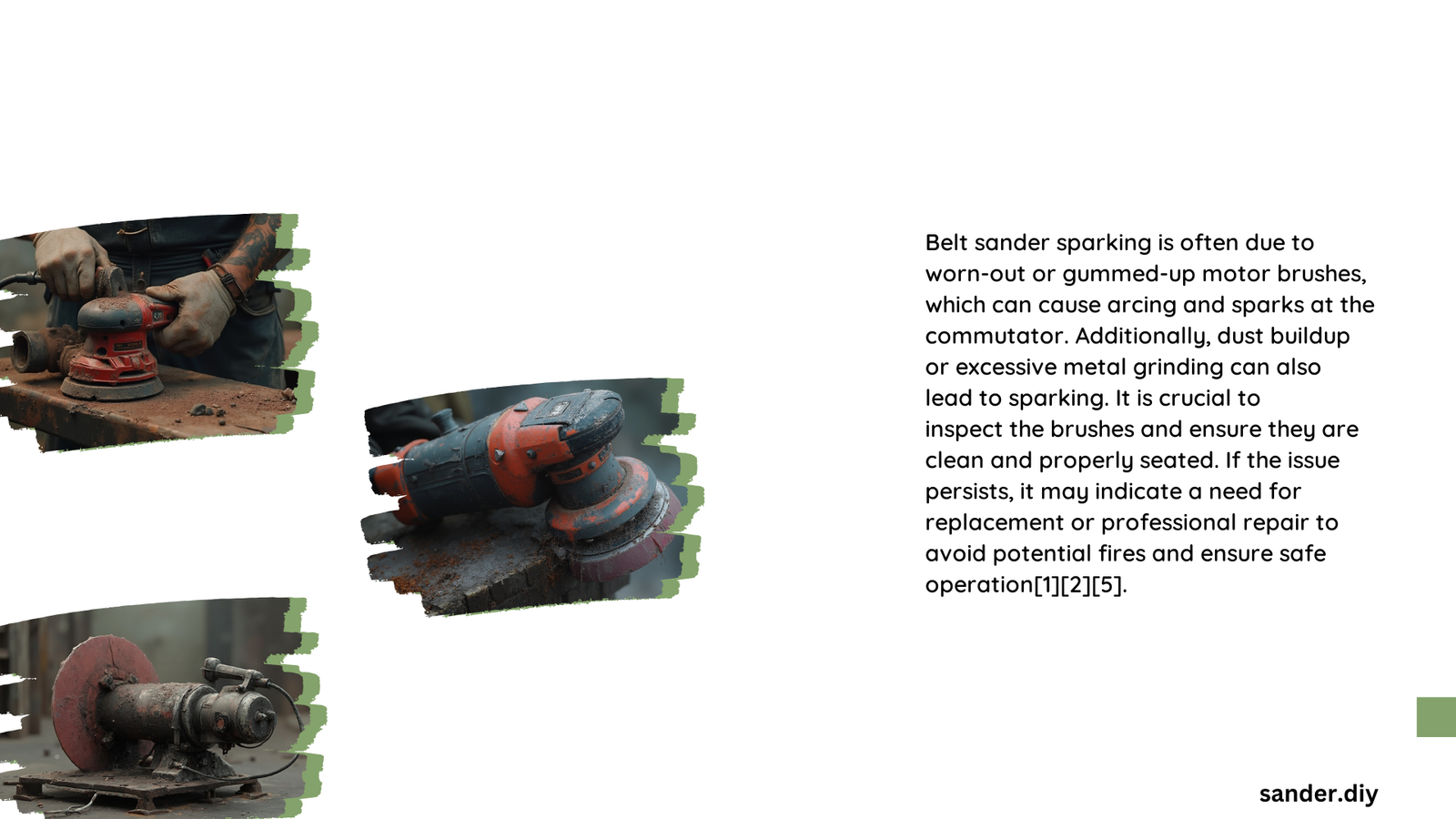Belt sander sparking is a critical safety concern that can potentially lead to fire hazards, equipment damage, and workplace accidents. Understanding the underlying causes, implementing preventive measures, and maintaining proper operational techniques are essential for ensuring safe and efficient sanding processes. This comprehensive guide explores the intricate dynamics of belt sander sparking, providing professionals and DIY enthusiasts with actionable insights to mitigate risks and optimize performance.
What Causes Belt Sander Sparking?
Why Do Different Materials Trigger Sparks?
Certain materials generate sparks when subjected to intense friction during sanding. The interaction between the abrasive belt and workpiece can create thermal energy that manifests as visible sparks. Key factors influencing spark generation include:
- Metallic Surfaces: Harder metals like steel and aluminum are more prone to sparking
- Composite Materials: Some engineered materials contain metallic particles
- High-Friction Scenarios: Aggressive sanding techniques increase spark potential
How Do Belt Characteristics Impact Sparking?
| Belt Factor | Spark Risk | Mitigation Strategy |
|---|---|---|
| Material Composition | High | Use specialized abrasive belts |
| Grit Size | Moderate | Select appropriate grit for material |
| Belt Condition | High | Regular inspection and replacement |
What Are the Primary Spark Generation Mechanisms?
- Mechanical Friction
- Direct contact between belt and workpiece
- Heat generation through intense surface interaction
-
Potential for spark creation increases with pressure
-
Electrical Discharge
- Static electricity buildup
- Sudden energy release through spark formation
- More common in dry, low-humidity environments
How to Prevent Belt Sander Sparking?

What Safety Precautions Should You Take?
Personal Protective Equipment
- Safety glasses with side shields
- Fire-resistant clothing
- Leather work gloves
- Respiratory protection
Workspace Preparation
- Clear workspace of flammable materials
- Ensure proper ventilation
- Install fire extinguisher nearby
- Use dust collection systems with spark arrestors
What Maintenance Practices Reduce Spark Risk?
Belt Sander Maintenance Checklist:
– Inspect belts for wear and damage before each use
– Clean sanding surfaces thoroughly
– Maintain proper belt tension
– Lubricate moving parts
– Check electrical connections
– Replace worn components promptly
Troubleshooting Belt Sander Sparking Issues
How Do You Diagnose Spark Problems?
Diagnostic Steps:
1. Identify spark location and frequency
2. Examine workpiece material
3. Check belt condition
4. Measure belt tension
5. Evaluate sanding technique
6. Inspect electrical system
What Are Advanced Mitigation Strategies?
- Use anti-static belts
- Implement humidity control
- Apply conductive coatings
- Utilize specialized spark-resistant equipment
- Develop comprehensive safety protocols
Technical Recommendations
When Should You Replace Equipment?
Replacement Indicators:
– Persistent sparking despite maintenance
– Visible belt degradation
– Inconsistent sanding performance
– Electrical system irregularities
– Age of equipment exceeding manufacturer recommendations
Conclusion
Belt sander sparking represents a complex interaction between mechanical, electrical, and material science principles. By understanding underlying mechanisms and implementing systematic prevention strategies, users can significantly reduce safety risks and maintain optimal equipment performance.
Reference:
– Timesavers Inc. Belt Sander Guidelines
– Woodworking Safety Resources
– Industrial Sanding Techniques
